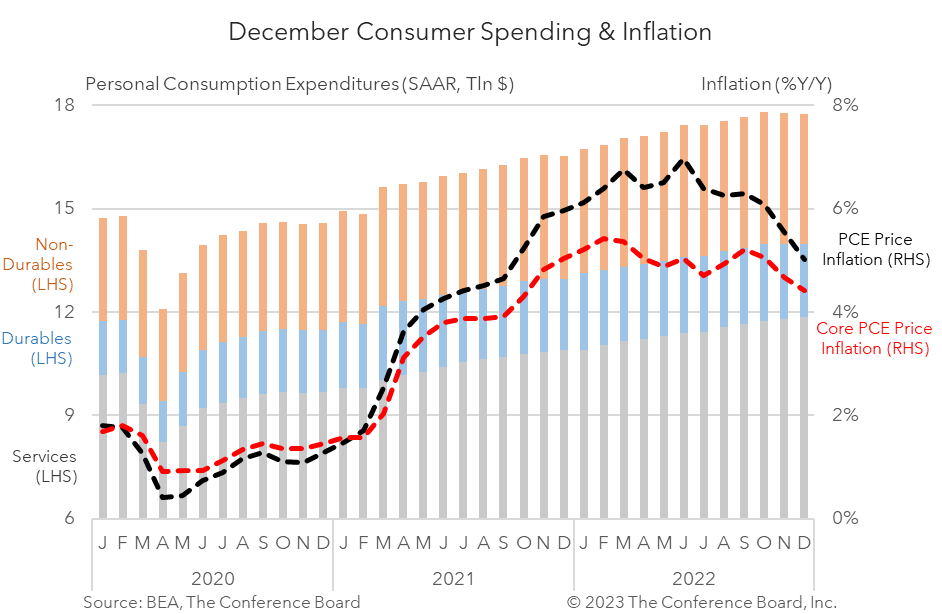
December Personal Income & Outlays data showed a cooling economy. Real consumer spending dropped by -0.3 percent month-over-month (m/m) – its second consecutive month of outright contraction. Meanwhile, inflation metrics continued to cool. Headline PCE price inflation slowed to 5.0 percent from a year earlier and cooled a touch in month-over-month terms. Personal incomes rose by 0.2 percent from the month prior. Collectively, these data will likely be interpreted by the Fed as a sign that monetary policy is working, and we expect it to hike by 25 basis points on February 1st following December’s 50 basis point hike. Headline PCE price inflation fell from 5.5 to 5.0 percent year-over-year (y/y) in December and core PCE price inflation (which excludes food and energy) fell from 4.7 to 4.4 percent y/y. On a month-over-month basis, headline PCE inflation rose by just 0.1 percent, but core PCE inflation rose by 0.3 percent (vs. 0.2 percent in November). While these readings remain well above the Fed’s 2 percent y/y target, progress is clearly being made. Overall personal income rose 0.2 percent m/m (in nominal terms) in December, vs. 0.3 m/m percent in November. Muted month-over-month inflation kept the real growth rate at about 0.2 percent as well. While real personal income growth was consistently negative in the first half of 2022, wage gains have been outpacing price increases for six consecutive months. Personal consumption expenditure dropped by -0.2 percent m/m (in nominal terms) in December, vs. -0.1 m/m percent in November. Spending on services rose by 0.5 percent m/m while spending on goods dropped -1.6 percent m/m. However, after accounting for inflation, real consumer spending fell to -0.3 percent m/m in December with spending on goods falling to -1.6 percent m/m and spending of services rising 0.5 percent m/m. We expect personal consumption expenditure growth to fall deeper into negative territory in the coming months driving the US economy into a recession. Note: nominal means non-inflation adjusted, while real means inflation adjusted.Inflation
Incomes
Spending

FOMC Decision: Do Three Dissents Mean a January Pause?
December 10, 2025
Fed December Decision: Not So Clear Cut
December 09, 2025
September Inflation Pause Bodes Well for Fed Cut
December 05, 2025
September Retail Sales Show Consumers Taking a Breather
November 25, 2025
New Truce Offers Stability after US–China Trade Plummeted in 2025
November 05, 2025
Fed Signals It May Need to Pause
October 29, 2025
